Although drink-driving is assuredly not recommended, Mercedes-Benz ought to glug a bottle of Moet with every A-Class reaching customers this year. It’s not every year that you reach 21 and Merc’s original, unruly but lovable A-Class transitioned through its ‘terrible twos’, into its ‘age of reason’, whisked past its pimply teenage period and has finally graduated from its long-haired and politically incorrect college of life, to emerge wholesome and complete; ready to assume the mantle of adulthood responsibly.
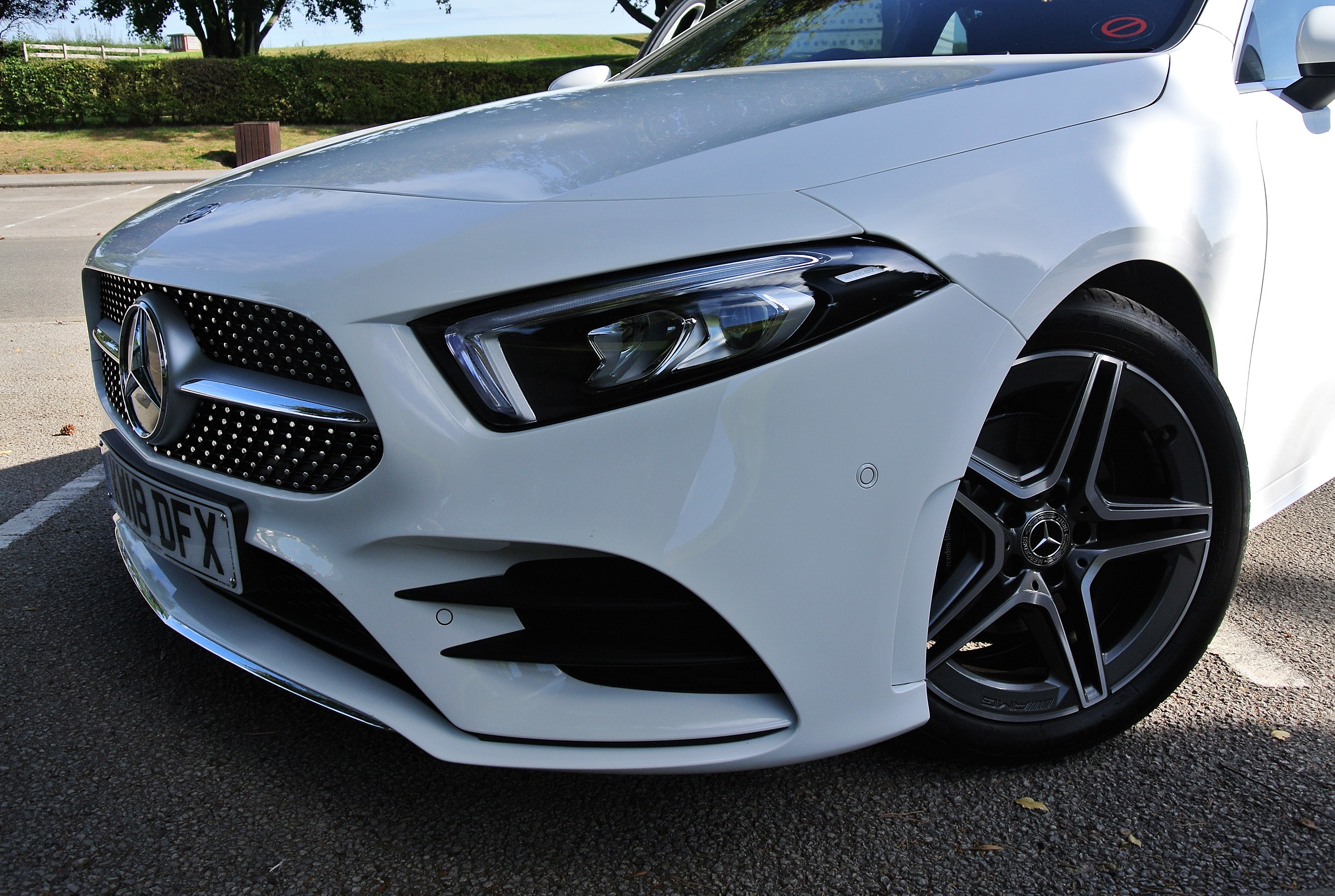
While you are unlikely to read my glowing review elsewhere, let me assure you that, were I standing at the pearly gates of the World Car of the Year, the new Merc A-Class would be in my pole position for overall honours. Yes, it has taken all of 21 years for the A-Class to become the rounded individual it was always intended to be and, if you can tolerate a base price of £25,800 (prior to FCD discounts; £33,405 for the turbo-petrol test car) for a top-of-the-shop rival to the everyman Vauxhall Astra, it could be all of the car you might ever need.
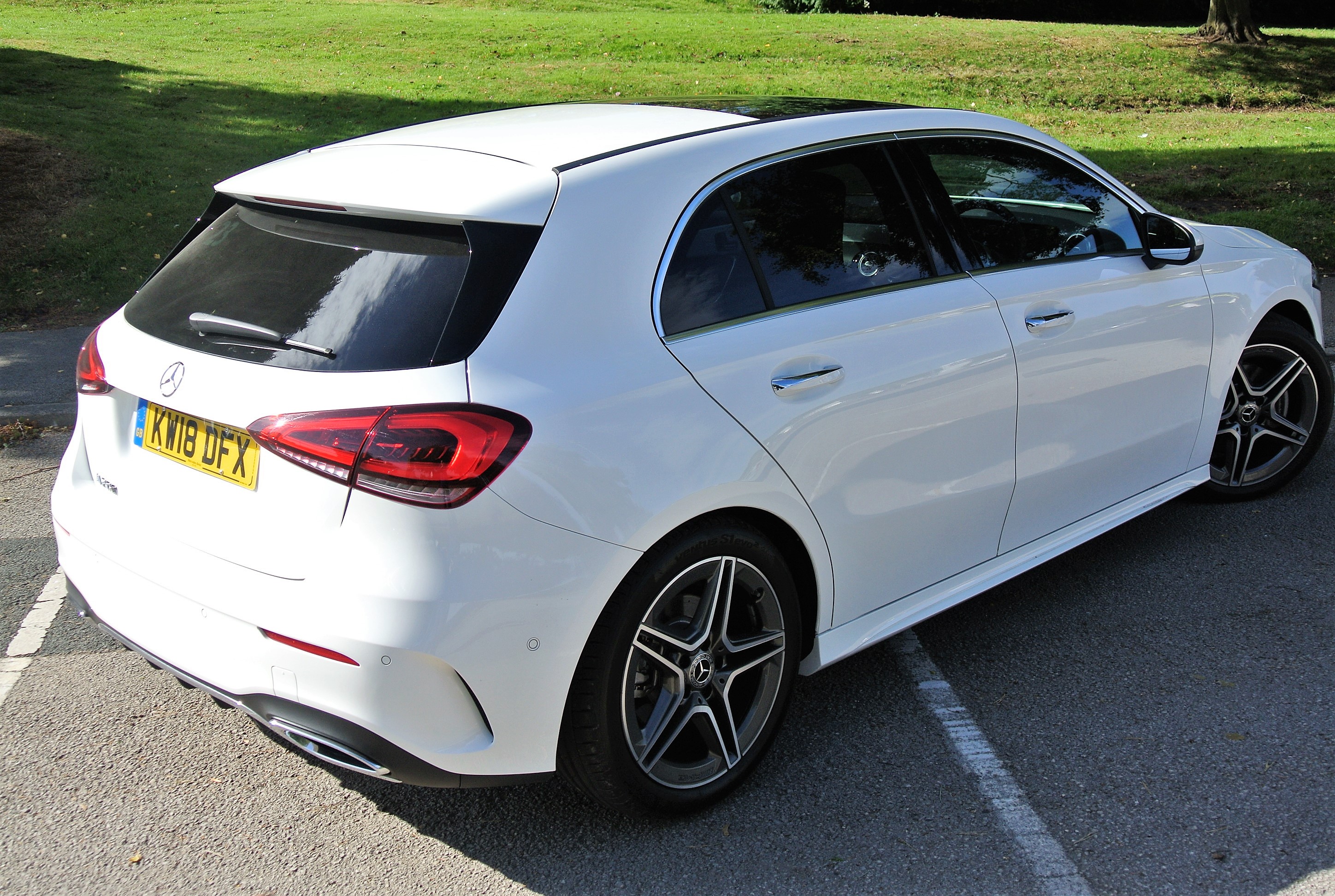
Lighter, stronger, roomier, safer, zestier and more dynamically competent than any of its forebears, the A200 AMG-Line defies logic en-route to a defiantly viable place in the premium grade firmament. Inheriting some of the crown jewels and an evident regal blood-line that starts with ultimate S-Class, the result is well-rounded and satisfyingly mature; a car capable of standing on its own four wheels to be the envy of other carmakers.
While the strides made in modern automotive engineering have been remarkable, Merc has judged the A-Class’s place in the market to perfection. Small capacity engines have been elbowing out their stodgy, pensionable parents and the 1,332cc four-cylinder unit in the white test example is a marvel of mass production excellence. Developing a cool 163bhp, accompanied by a meaty 184lbs ft of torque (at a most useful peak of 1,620rpm), it is little wonder that the 1,375kg hatchback blitzes the 0-60mph benchmark in a mere 7.7s and can post a top speed just shy of 140mph.
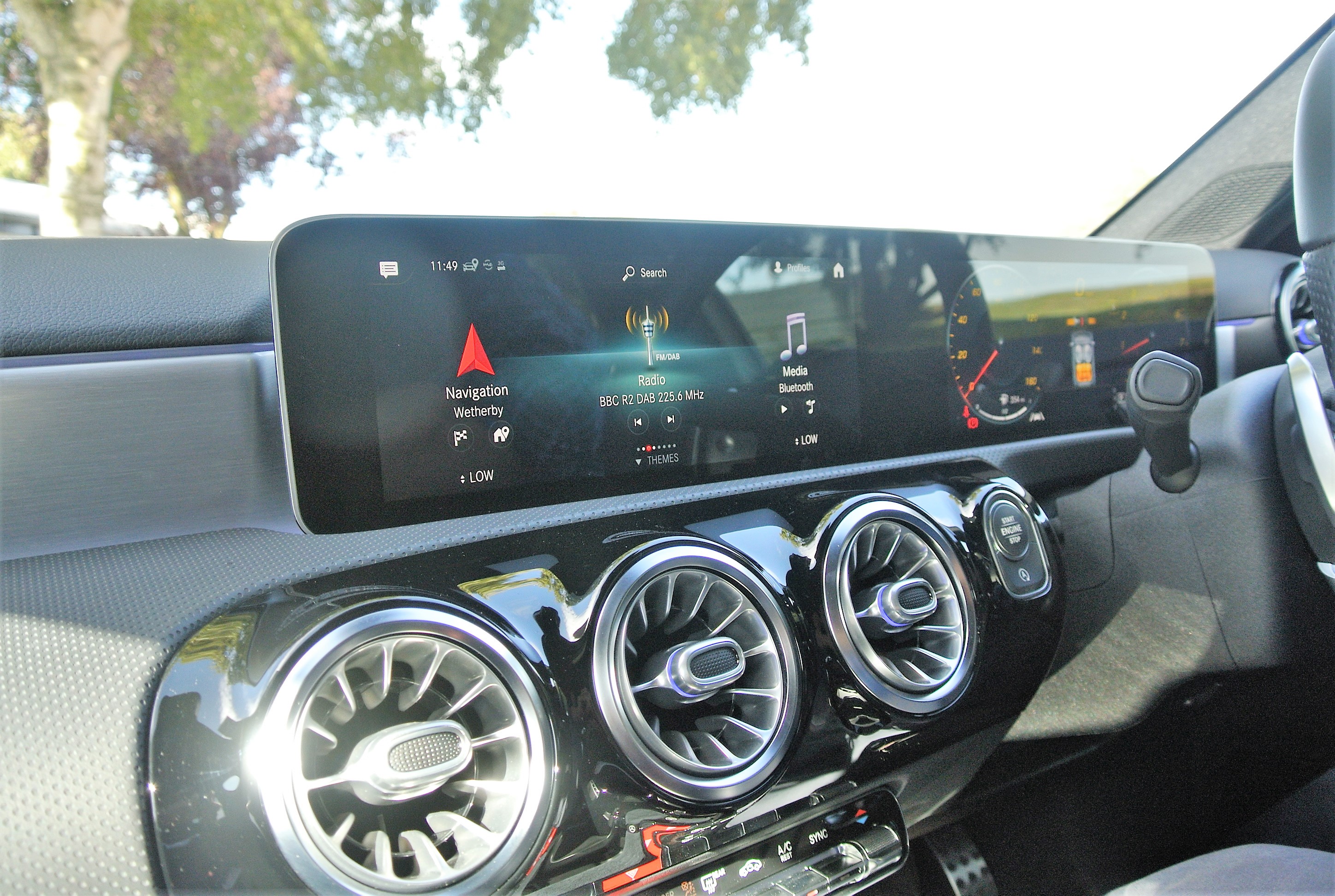
Yet, this is no lofty autobahn-geared entity that works well in ‘der Vaterland’, as its seven-speed, twin-clutch, automated-manual gearbox has an ideal ratio for most motoring circumstances, from low-speed manoeuvring to high-speed cruising. Under the latest WTLP fuel economy regime, it returns 53.3mpg to every gallon and emits a modest 123g/km CO2 in the process. If you want even better results and are not diesel-averse, the less costly 180d (1.5-litre turbo) can muster 68.9mpg.
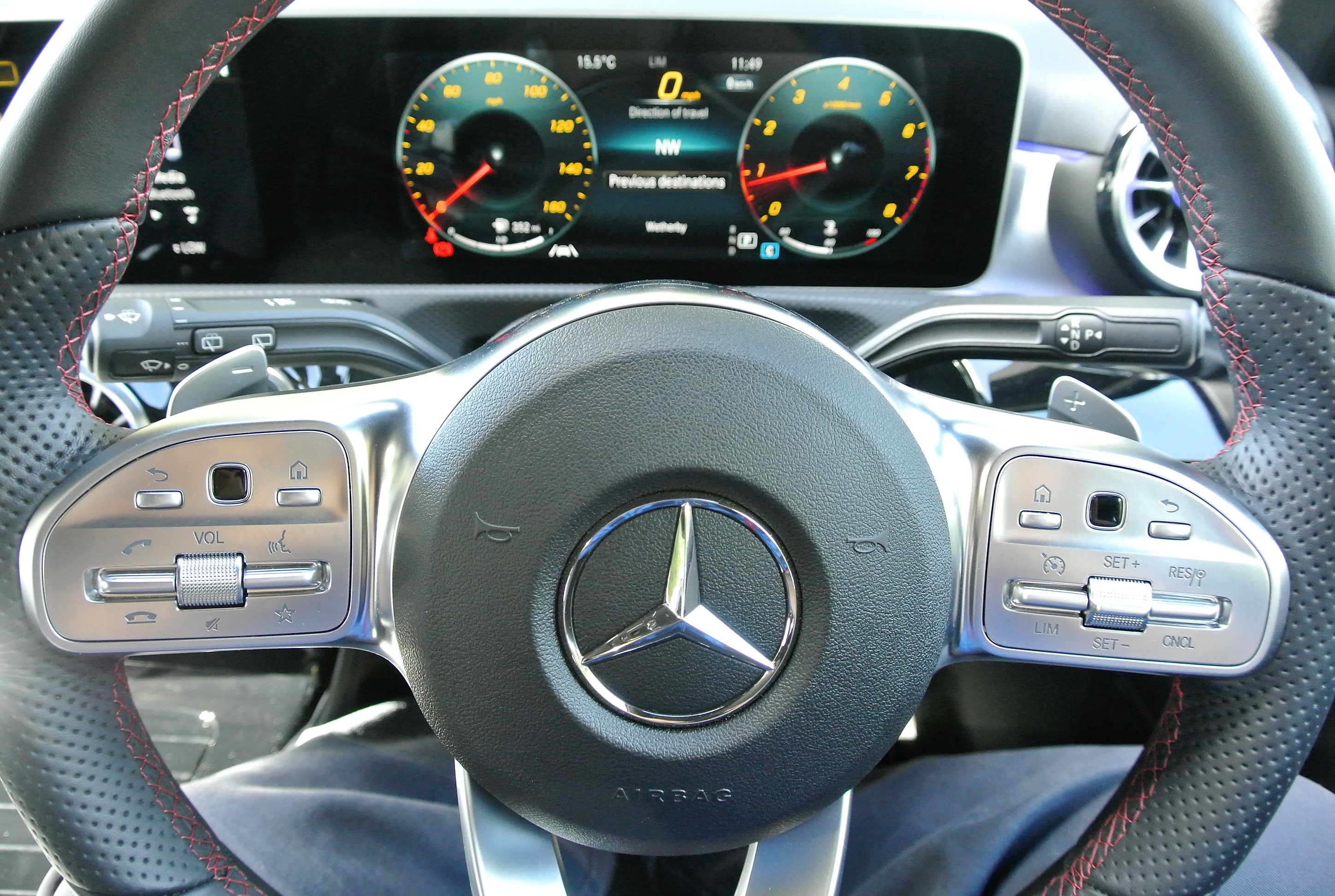
Like Mercs of the past, the auto-box is controlled via the right-hand column stalk, which looks and feels as substantial as an indicator stalk. In typical Merc form, the left-hand stalk controls lamps, winkers and wipers, which can be discombobulating initially but, being so logical overall, the driver becomes familiar with them speedily. Sticking with the quite different interior detailing, the first item of major note is the dashboard, with a digital wide-screen interface that runs from driver’s door pillar to well over the car’s centre-line. It is attractive, packed with information and is eminently logical.
As a touch-screen, it works in conjunction with the steering-wheel cross-spoke ‘swipe and click’ controls and the best voice activation system I have ever used in a car. It is intelligent and flawless in its range of control, which ensures that the driver’s eyes can be focused on the road and not distracted by wandering around a maze of rocker switches. More importantly, it looks advanced and great. Even the smart sat-nav that utilises augmented reality (by overlaying navigation data with real images from the car’s cameras) provides an assured step into unfamiliar territory, on which the driver becomes reliant quickly.
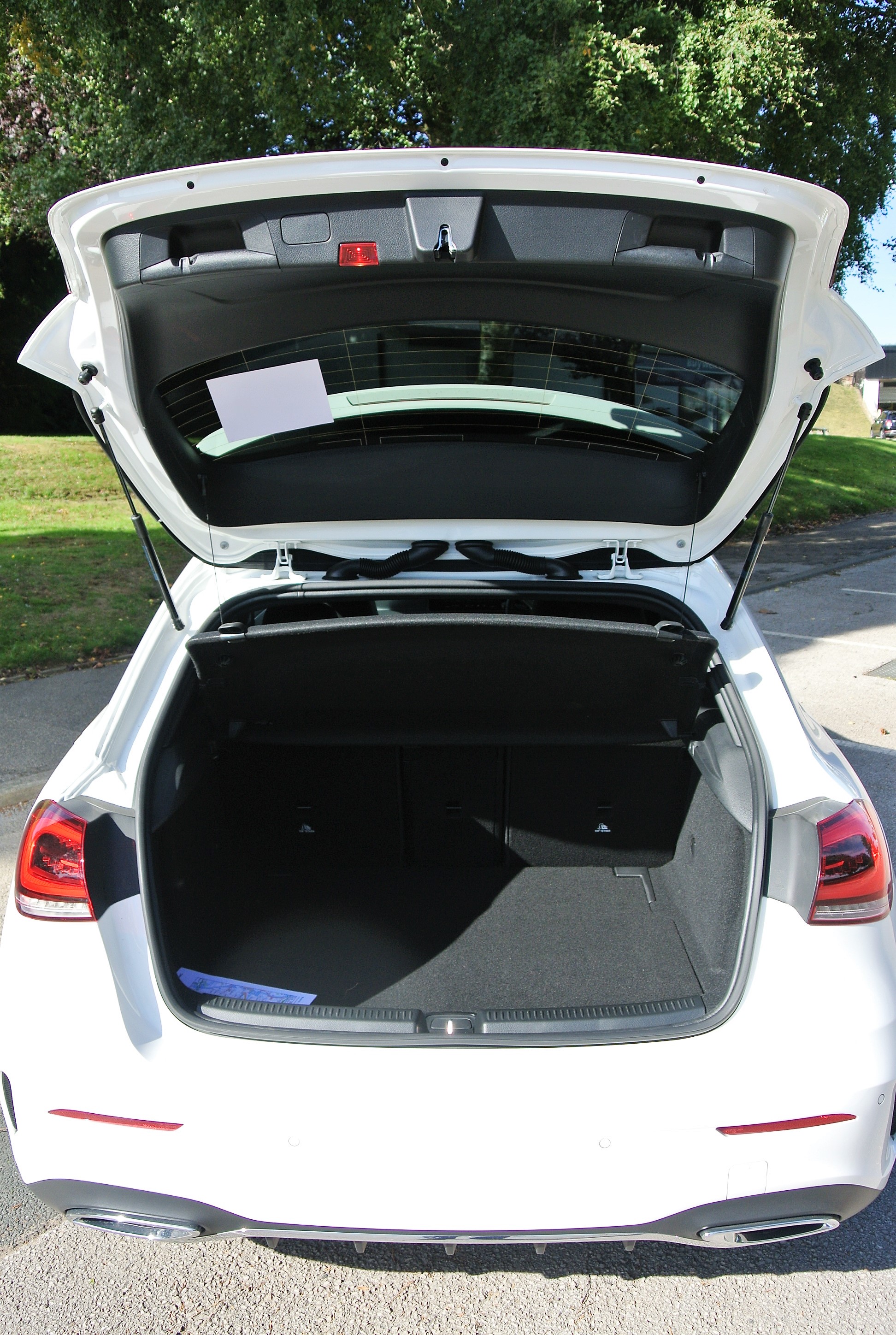
The cabin offers easy access and bags of room for up to five people, even though the bolstered and very supportive AMG front sports seats are slightly bulkier than the stock items. Crack open the hatchback and a fairly typical 370-litres of boot can be expanded to over 1,210-litres by folding forward the 60:40-split seatbacks. Incidentally, there is loads of storage space within the cockpit for the customary in-car paraphernalia.

While its on-road performance is brilliant, to make good use of it, the A-Class needs competent suspension and, despite the sportier bias afforded by the AMG kit, sprung by coils and double-tube gas dampers, the ride quality is fluent and non-jarring, while crisp steering responses, finely-judged all-disc brake balance and excellent 18.0-inch diameter alloy wheel control (clad in 225/45 section tyres) provide a supple driving experience. Needless to say (it is a Merc after all), the new A-Class is packed with driver assist, safety and electronic aids to keep everything on an even keel. The car is also connected and provides smartphone integration and wireless charging, with the useful option of a digital vehicle key via the driver’s device.
To explain the extra-cost items, the ‘premium-plus’ package (£3,595) includes several convenience and comfort features like auto-dimming mirrors, active parking, heated memory seats, 64-colour ambient lighting, keyless-go, a mid-range sound system, adaptive LED headlamps and a panoramic glazed roof. The smartphone package is £495, as is the augmented sat-nav, while the aluminium trim is £120. As with all German products, the list price escalates rapidly, when you start to tick the options’ boxes.
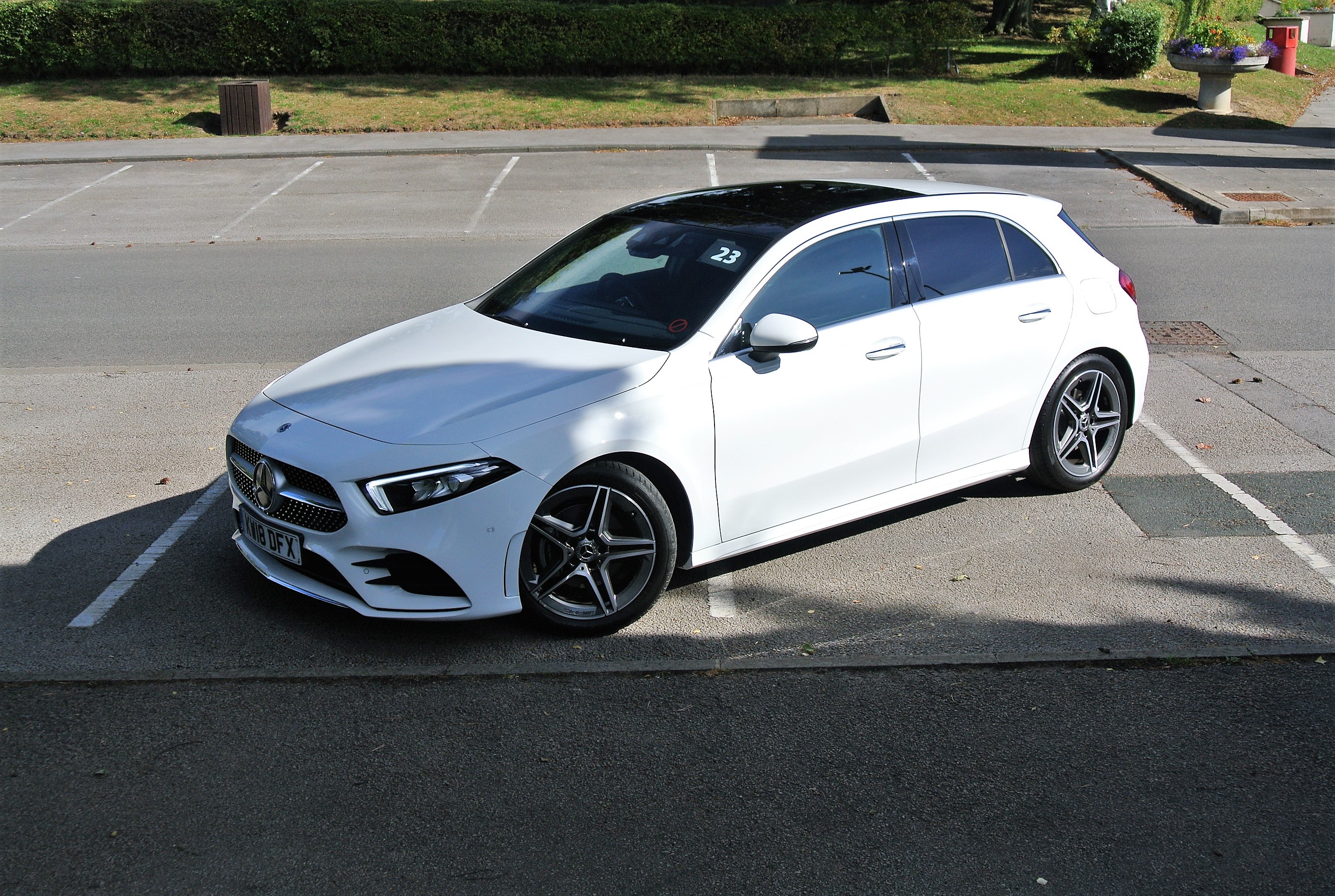
Overall, the new Mercedes-Benz A-Class is a truly special entry-level to one of Germany’s finest carmakers. Interestingly, the UK has always provided a good home to previous A-Class models and was Merc’s top export market last year. Thanks to strong fleet registrations, the vastly improved, more mature, yet technologically advanced A-Class is sure to exceed expectations again in coming years.